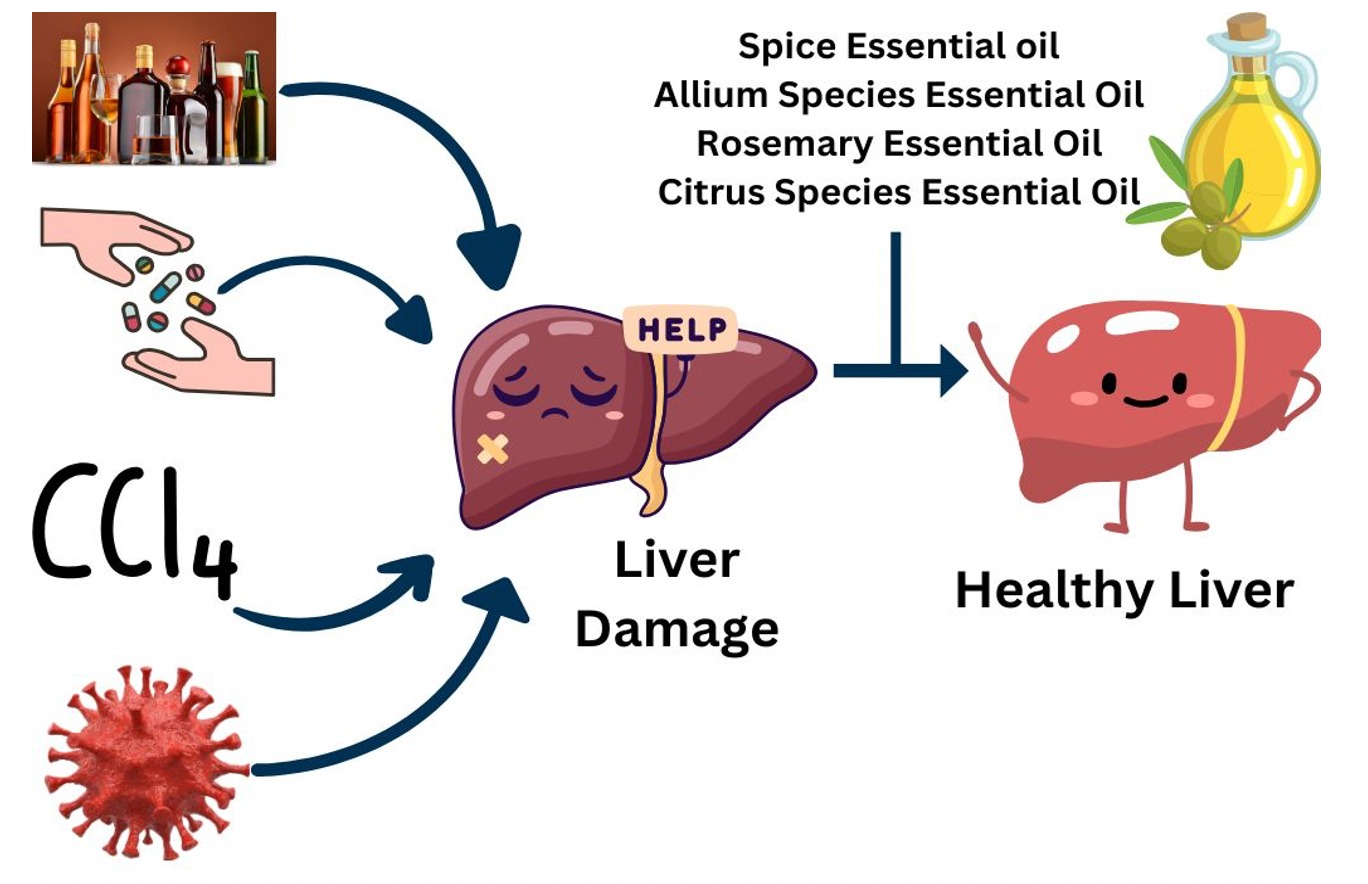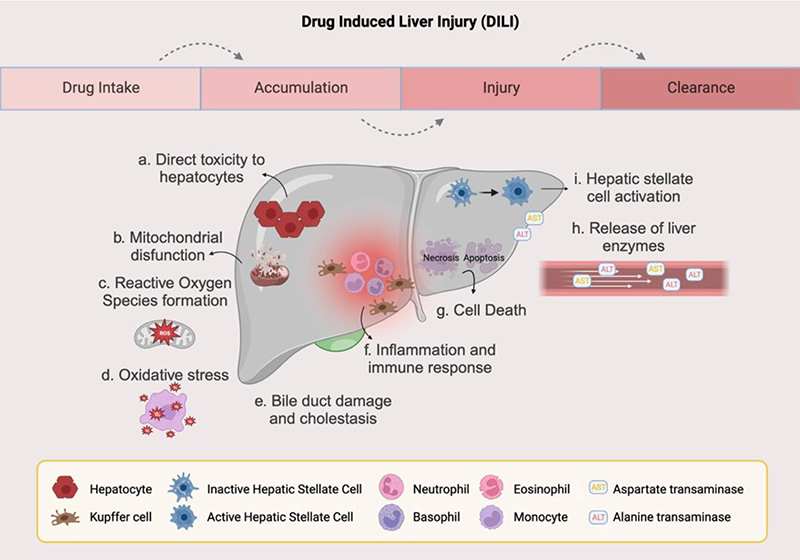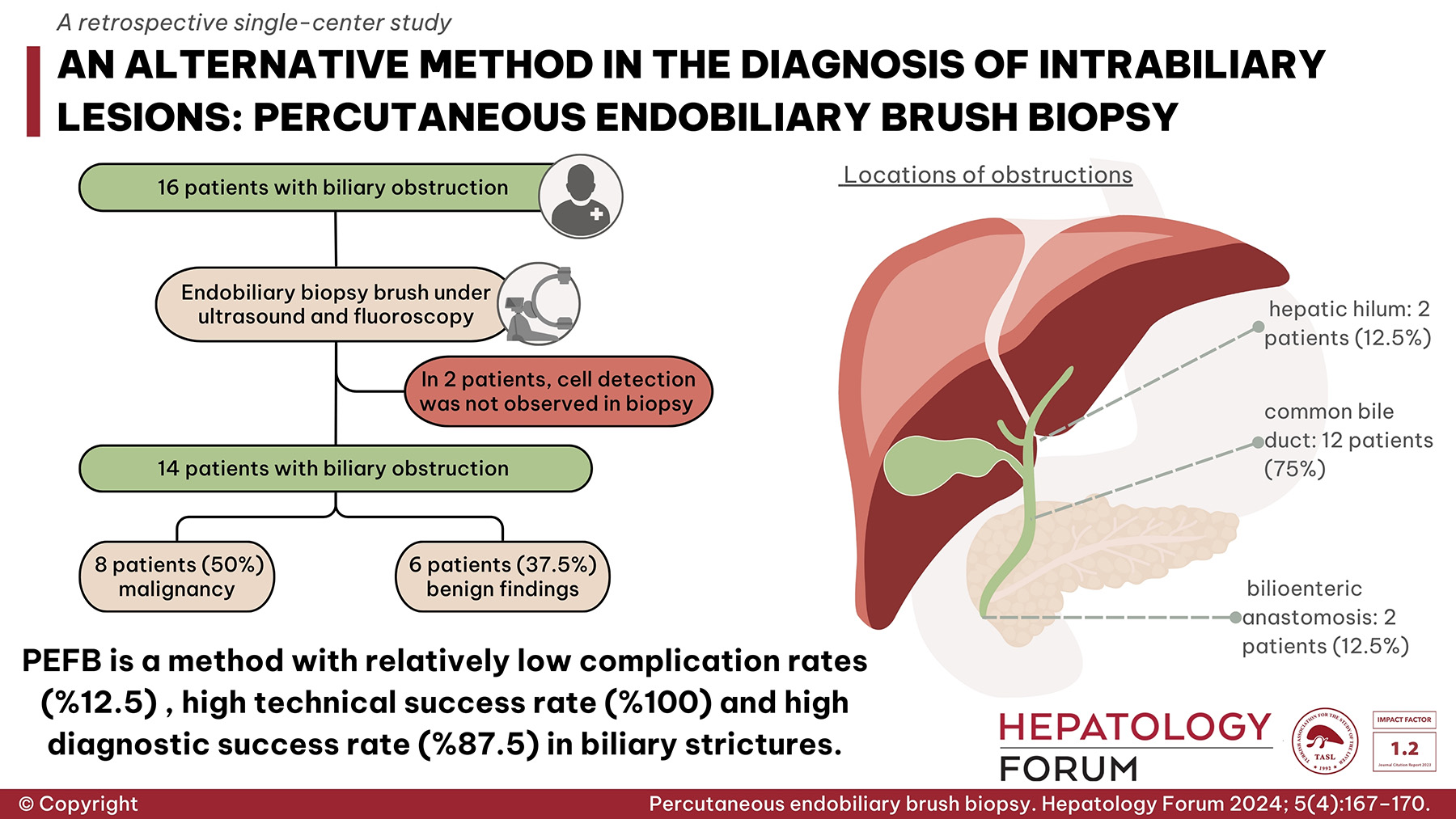2Department of Radiology, Kocaeli City Hospital, Kocaeli, Turkiye
Abstract
Background and Aim: Biliary strictures can occur as a result of various benign or malignant processes. The aim of this study is to evaluate the effectiveness and reliability of percutaneous endobiliary brush biopsy in the diagnosis of intrabiliary lesions.
Material and Methods: This retrospective, single-center study was conducted between January 2022 and April 2023, involving a total of 16 patients. Of the patients, 10 were male (62.5%), and 6 were female (37.5%). The average age of the patients was 68.1±8. All patients underwent the procedure using an endobiliary biopsy brush under ultrasound and fluoroscopic guidance.
Results: Technical success was achieved in all patients (100%). Cell detection was not observed in biopsy samples from 2 patients (12.5%), resulting in a diagnostic success rate of 87.5%. Access was made to the right biliary system in 14 patients (87.5%) and to the left biliary system in 2 patients (12.5%). Biopsy locations included the common bile duct in 12 patients (75%), hepatic hilum in 2 patients (12.5%), and bilioenteric anastomosis line in 2 patients (12.5%). The mean fluoroscopy time was 16.2±7.1 minutes. The average radiation dose was 660±370 mSv. Pathological diagnosis revealed malignancy in 8 patients (50%) and benign findings in 6 patients (37.5%). Liver abscess requiring drainage developed in 2 patients (12.5%).
Conclusion: Percutaneous endobiliary brush biopsy performed under imaging gui





 Mustafa Ozdemir1
Mustafa Ozdemir1 









